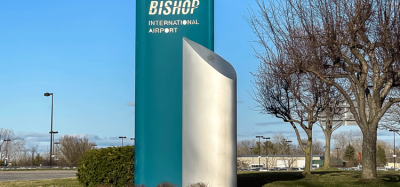‘Ready to Fly’ is closer to reality with new airport standards
- Like
- Digg
- Del
- Tumblr
- VKontakte
- Buffer
- Love This
- Odnoklassniki
- Meneame
- Blogger
- Amazon
- Yahoo Mail
- Gmail
- AOL
- Newsvine
- HackerNews
- Evernote
- MySpace
- Mail.ru
- Viadeo
- Line
- Comments
- Yummly
- SMS
- Viber
- Telegram
- Subscribe
- Skype
- Facebook Messenger
- Kakao
- LiveJournal
- Yammer
- Edgar
- Fintel
- Mix
- Instapaper
- Copy Link
Posted: 12 December 2022 | International Airport Review | No comments yet
The International Air Transport Association has developed industry standards which will bring the aim of having passengers arrive at airports ready-to-fly one step closer to reality.


The International Air Transport Association (IATA) has developed industry standards which will bring the aim of having passengers arrive at airports ready-to-fly one step closer to reality. The newly released Recommended Practice on Digitalization of Admissibility will enable passengers to digitally prove admissibility to an international destination, avoiding a stop at the check-in desk or boarding gate for document checks.
Under the One ID initiative airlines are working with IATA to digitalise the passenger experience at airports with contactless biometric-enabled processes.
Programmes are already in use in various airports enabling travelers to move through airport processes such as boarding without producing paper documentation because their boarding pass is linked to a biometric identifier. But in many cases travellers would still have to prove their admissibility at a check-in desk or boarding gate with physical checks of paper documentation e.g., passports, visas and health credentials.
The Digitalization of Admissibility standard will advance the realisation of One ID with a mechanism for passengers to digitally obtain all necessary pre-travel authorisations directly from governments before their trip. By sharing the ‘OK to Fly’ status with their airline, travellers can avoid all on-airport document checks.
“Passengers want technology to make travel simpler. By enabling passengers to prove their admissibility to their airline before they get to the airport, we are taking a major step forward. The recent IATA Global Passenger survey found that 83 per cent of travellers are willing to share immigration information for expedited processing. That is why we are confident this will be a popular option for travellers when it is implemented. And there is good incentive for airlines and governments as well with improved data quality, streamlined resourcing requirements and identification of admissibility issues before passengers get to the airport,” commented Nick Careen, IATA’s Senior Vice President for Operations, Safety and Security.
Related topics
Airside operations, Big data, Digital transformation, New technologies, Passenger experience and seamless travel, Regulation and Legislation, Security, Terminal operations


















